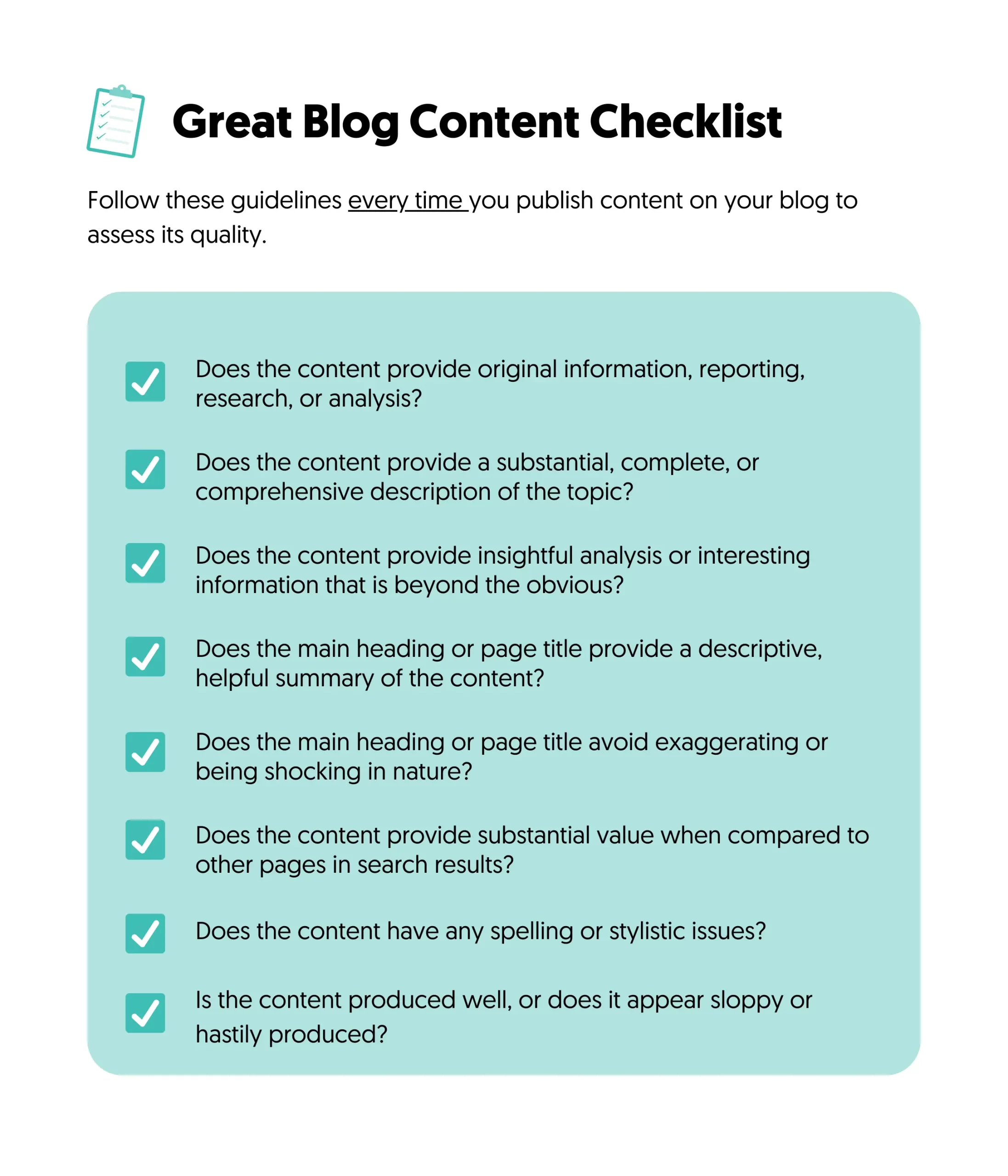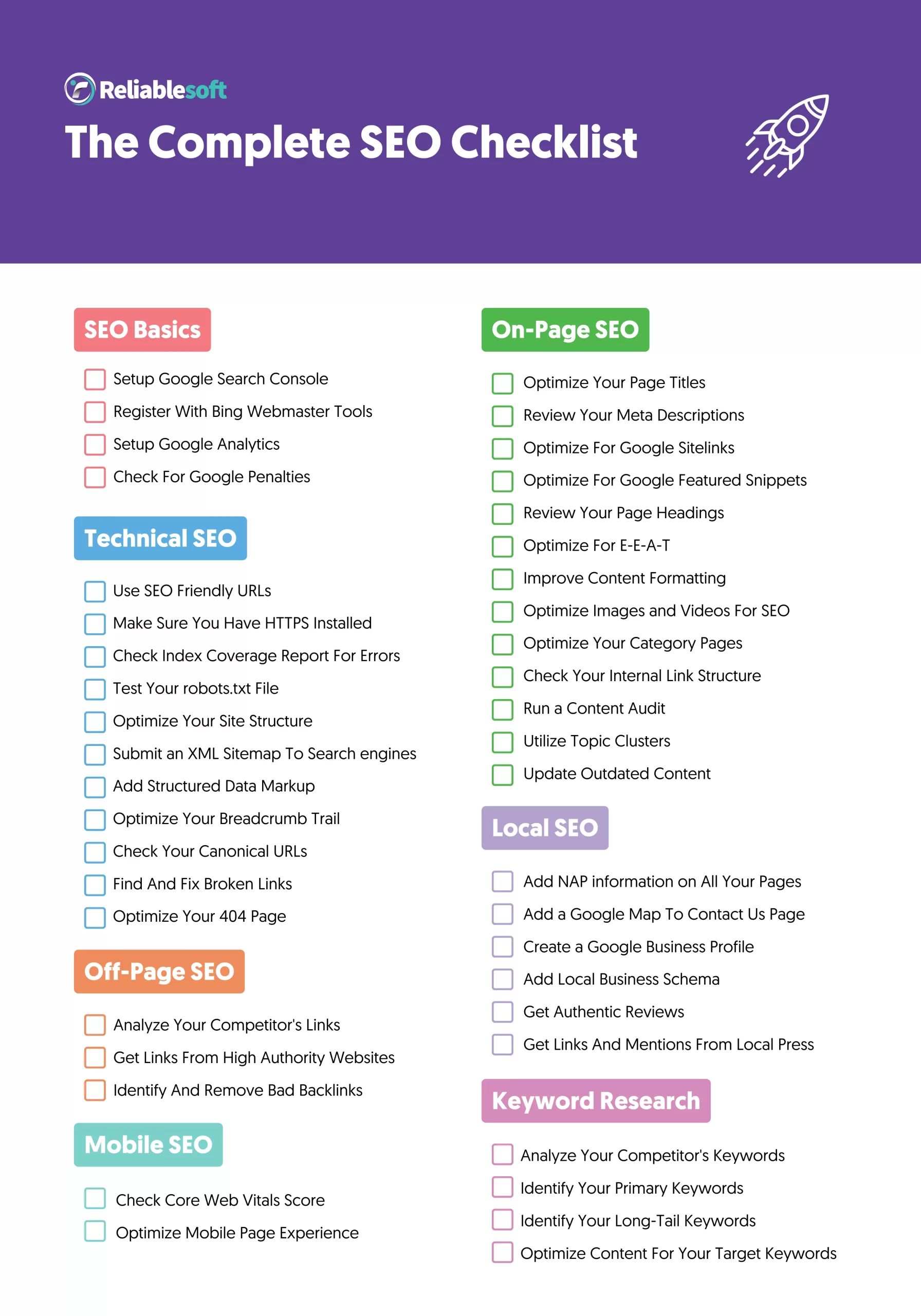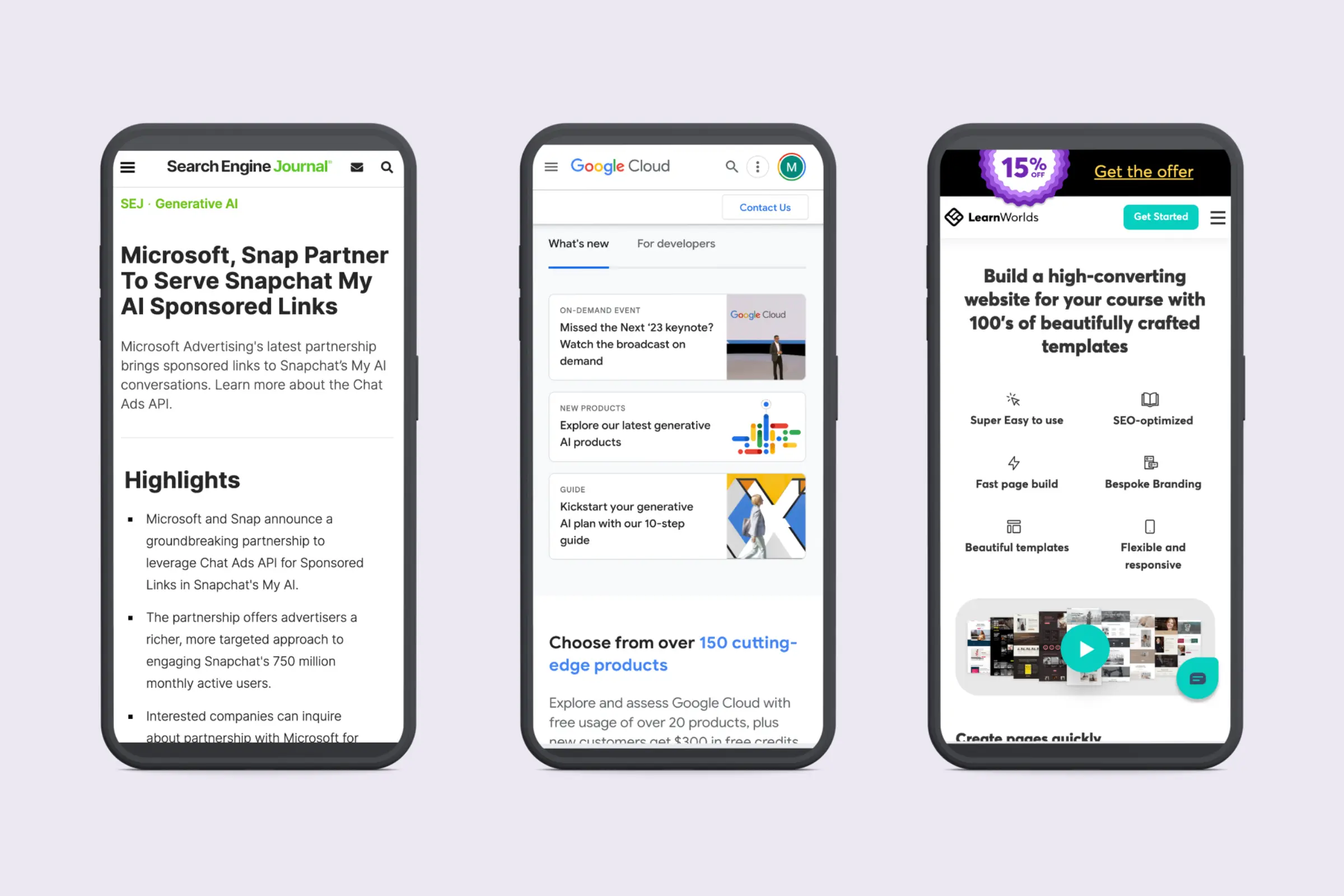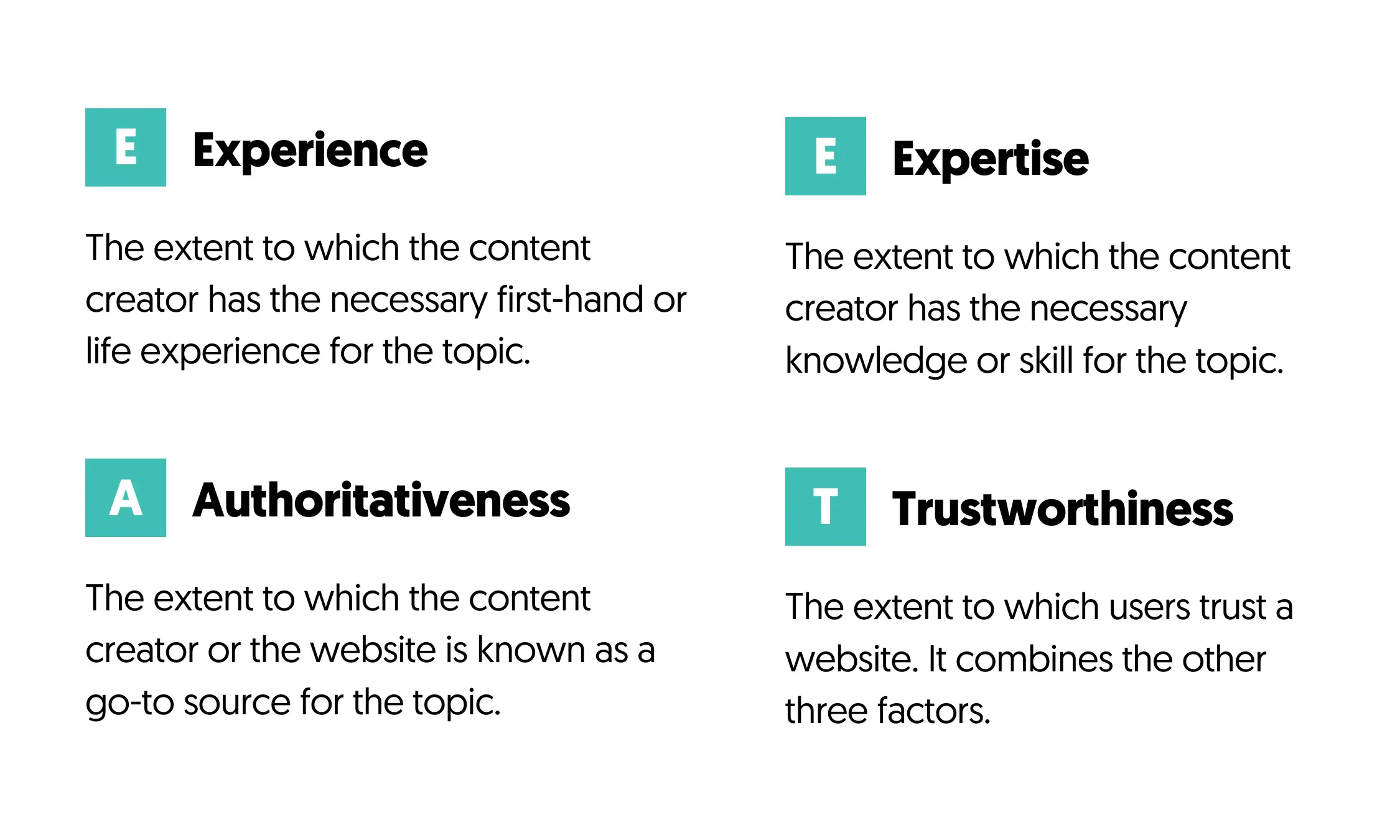What makes a good website that both search engines and users like? Are there any unique characteristics that help you differentiate your website?
The simple answer is yes, there are some characteristics that every great website needs to have, and this is precisely what you’ll learn in this post.
What Is A Good Website?
Simply put, a good website satisfies users' search intent. It is easy for search engines to access and understand. It generates traffic/conversions/ leads to the business owner.
7 Key Characteristics of A Great Website
- Has Useful Content
- Optimized For Search Engines
- Trustworthy And Secure
- Designed And Optimized For Mobile
- Fast And Easy To Use
- Demonstrates High-Levels of E-E-A-T
- Has References From Other Good Sites
1. Has Useful Content
Great, useful content is the foundation of every good website. Google and other search engines have become very good at surfacing websites with high-quality content, which means you cannot survive online if your content is not good.
When we talk about good content, we don’t mean any content but content users want to read.
This is a critical success factor. Once users land on your site from Google or other sources, you can tell if they like your content by looking at your Google Analytics reports and analyzing metrics like:
- time on site
- bounce rate
- exit rate
- pages/session
- average session duration
If these numbers are good, and there is interaction with your content in the form of comments, social media shares, and backlinks, then this is a good signal that your content satisfies the user intent.
If none of the above is true, you should return to the drawing board and re-think your content strategy. Use this checklist to assess the quality of your content:

The following guides will help you create high-quality content:
2. Optimized For Search Engines
You can create awesome content, and that’s great, but what’s next? You need to make sure that Google can read and understand what your website and content are all about.
Simply put, you must create an SEO-friendly website free of technical SEO errors and provide the right signals to search engine crawlers through the content.
The idea is simple: the more information you can give to search engines in a way they can understand (that’s also a very simplified definition of SEO), the greater your chances of achieving higher rankings.
SEO-optimized websites provide a great user experience because they are easy to use, accessible, and well-structured, and this combination makes them great websites.
Follow this checklist to optimize your website for SEO:

The following guides will help create SEO-optimized websites:
3. Trustworthy And Secure
Gaining user trust is an important success factor because even if you manage to win Google's trust, you still need to win user trust.
User trust has to do with the quality of the content, but it also relates to treating your users with respect.
You respect your users by providing accurate, easy-access information without trying to trick them into clicking ads.
User trust is about making sure that any information they share with you is secure and private and not shared with marketing companies without their concern.
User trust ensures that any information downloaded from your website will not inject their devices with malware.
When you convince users that you are trying to provide a great experience, you just made a big step in having a fantastic website with additional benefits. Users who trust a website will:
- Share your content on social media.
- Mention your website in their posts.
- They are more likely to become loyal readers.
- You are more likely to convert into customers (if you sell a product or service).
4. Designed And Optimized For Mobile
The vast majority of people are using their mobile devices to start or continue a search, and it is more than necessary to have a website that is optimized for mobile.
Google added mobile-friendliness as a search engine ranking factor, so failing to provide your users with a mobile-friendly website will damage your Google rankings.
Remember that a mobile-friendly website is not the same as a mobile-optimized one.
Having a responsive website that shows on mobile without scroll bars is the first step, but it’s not enough.
You need to pay special attention to how users interact with your website on mobile and ensure they can find what they want quickly and easily.

5. Fast And Easy To Use
Website speed is directly related to SEO, usability, and user trust. Neither users nor search engines want to visit a website that takes too long to load. Slow websites have lower Google rankings and offer a bad experience to users.
According to Google, a website is considered slow if it loads on mobile in less than 2.5 seconds. This target is challenging, but the closer you get to this number, the better.
What kind of website do you like to visit, a slow-loading website full of graphics or a fast website with a more careful approach to multimedia elements? The answer is obvious, so consider this when building your website.
6. Demonstrates High-Levels of E-E-A-T
Experience, Expertise, Authoritativeness, and Trustworthiness are four elements that started gaining ground in SEO in the last few months.
Google has stated clearly that good websites demonstrate high levels of E-E-A-T, and this is the kind of website they want to show in their search results.
In simple terms, E-E-A-T has to do with the quality of the content, the author's credibility, and the website's trustworthiness.

For Google, a good website has content written by experts on the topic.
Experts prove their expertise not just through their academic credentials or experience but also through their online reputation and how other experts and good websites perceive them.
In other words, you can no longer pretend to be an expert on a topic but must prove it.
Social Proof
In today’s competitive online world and with the rise of social media networks, you must win the social media game, too.
A good website is easier to share on social networks, and social acceptability (likes, shares, followers) proves it’s great.
Unfortunately, social success won’t happen overnight and won’t happen without effort. You need a plan and a social media strategy to promote your website on social networks and bring it to the right users.
It’s not enough to say you have a good website; others must agree by liking, sharing, and following it.
7. Has References From Other Good Sites
This is how search engines work when you type a search term in their search box. Let me explain.
It is normal to have many websites that meet the above criteria, but how do search engines decide which websites to show on the first page of the results?
The answer is in the number and type of references (links) a website has compared to the rest.
A website that has backlinks from other websites has a clear advantage over websites that don’t have any references from other websites.
Over the years, people have tried to manipulate this by generating thousands of unnatural links to gain better rankings, but search engines, especially Google, have become ‘clever’ enough to differentiate between quality links and spammy links.
A quality link that can help you with rankings comes from other good and trusted websites.
It’s a vast topic to analyze, but the takeaway is that to differentiate your website from other websites, you need more incoming links (both in quality and quantity) than the other sites competing for the same keywords.
It’s the same story as with the social proof game: A good website is more likely to attract incoming links that will strengthen its rankings, and both users and search engines consider a high-ranking website a good one.
A Good Website Takes Time And a LOT of Work.
When you ask Google why a website doesn’t have high rankings, they will tell you to follow the abovementioned rules and keep providing a good experience for your users.
While this is a cliché, it’s the hard truth, and the reason is simple. Thousands of websites compete for a position on the first page of the search results for any given keyword.
The ones that survive in the end are those that keep improving and becoming better over time.
Is this something that you can create in a few months? Certainly not, BUT if you do consistent work over time, you will see that things change gradually, and everything becomes easier.
Key Learnings
What makes a good website is not the design alone but other elements, including content, usability, SEO, social media, links, and trust.
As a first step, you need to ensure that you have a good score on all these factors, and as a second step, to keep working until you convince everyone (crawlers and users) that you have a good website that deserves high rankings.
Creating a great website is not easy, but it’s not impossible either.



